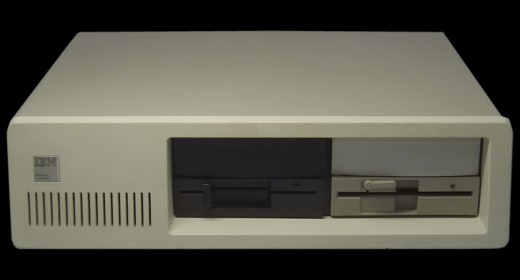
In 1977 Steve Leininger left his Silicon Valley job to work for Texas based Tandy Corp. He built the prototype Tandy TRS-80 for less than $150,000 as a test project for his boss. John Roach, Tandy’s product manager, had gotten the company president, Charles Tandy to agree to 3500 units after demonstrating the prototype model. He figured that this was exactly the number of stores they had so if no one bought the computers, at least the stores could make use of them.
In the beginning…
The first units were delivered that November sight unseen. No one had any idea of what they were in for. The managers at Tandy did not have a clue if they could sell these things but to their shock, within weeks of their introduction, over 15,000 calls came in from people wanting to order a TRS-80 computer. In the first year, more than 250,000 people were on waiting lists to buy one.
When the first unit; the TRS-80 Model I appeared it had a compact design; blending the case and keyboard together with a separate power supply unit. The machine employed a Zilog Z80, 1.77 MHz processor and a whopping 4 KB of RAM, which was later, bumped up to 16 KB. The pre-release price was $500 with a $50 deposit.
The state of the art for consumer use
The first CRT display was white-on-black which actually was an RCA XL-100 black and white TV. The green-on-black display came later. The text display came in at 32 or 64 characters wide by 16 lines of resolution which stretched the existing video hardware’s limits. That’s what you get from just one kilobyte of video memory. At the time, this was state of the art consumer hardware, but it got better.
The Radio Shack model CTR-41 cassette recorder was included with the deluxe $599 package. The information produced by users was initially saved on the cassette tape. The cassette recorder’s interface was extremely sluggish and also inconsistent. The machine only gave a crude indication of whether the volume was properly set up; using a blinking character on the computer screen and usually just when data was really being loaded.
At the time Radio Shack offered a floppy drive with the TRS-80. This took its origin from a Western Digital 1771 single density floppy disk controller chip. Unfortunately, it was lacking an external data separator, and tended to be very unreliable in reality. Radio Shack introduced a 5MB hard-drive unit for the TRS-80 soon after much to the relief of the early adopters.
An electrostatic printer was also added. This unit scanned the video memory through the same bus connector used for the E/I, then imprinted a graphic of the screen on the aluminum-coated paper. They called it a “Quick Printer”.
There were three versions of the BASIC programming language created to support the TRS-80 Model I unit. Level I BASIC easily fit into 4 KB of ROM, and Level II BASIC squeezed into 12 KB of ROM. The Level I machine was single precision only with a smaller list of instructions. Level II brought in double-precision floating point support along with significantly more expansive range instructions. Microsoft’s Level III included more functions for the full 16 bit architecture.
Software applications
The business applications that were included were; VisiCalc and As-Easy-As spreadsheets. The company also included the Scripsit word processor and the Lazy Writer, Electric Pencil. Radio Shack provided payroll, personal finance, and educational programs, all on cassette as well.
Steve Leininger and the TRS-80 group of computer systems never really received the kind of recognition they deserved as pioneers from the Personal Computing era. More TRS-80 computer systems were built and offered than every other kind, yet all of the media attention focused on IBM and Apple Computers. The TRS-80 will be remembered by many as one of the forerunners of our modern day systems.


